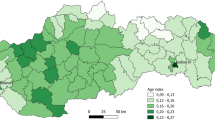Abstract
In the Maximal Expected Coverage Relocation Problem the aim is to provide a dynamic relocation strategy for emergency vehicle waiting sites in such a way that the expected covered demand is maximized and the number of waiting site relocations is controlled. The problem can be formulated as an integer linear program. When the number of vehicles is relatively small this program can be solved within reasonable computing time. Simulations conducted with real-life emergency medical services data from the Montreal area confirm the feasibility of the proposed approach.


Similar content being viewed by others
References
Toregas C, Swain R, ReVelle CS and Bergman L (1971). The location of emergency service facilities. Opns Res 19: 1363–1373.
Church RL and ReVelle CS (1974). The maximal covering location problem. Papers Regional Sci Assoc 32: 101–118.
Schilling DA et al. (1979). The TEAM/FLEET models for simultaneous facility and equipment sitting. Transportation Sci 13: 163–175.
Daskin MS and Stern EH (1981). A hierarchical objective set covering model for emergency medical service vehicle deployment. Transportation Sci 15: 137–152.
Hogan K and ReVelle CS (1986). Concept and applications of backup coverage. Mngt Sci 32: 1434–1444.
Gendreau M, Laporte G and Semet F (1997). Solving an ambulance location model by tabu search. Location Sci 5: 75–88.
Larson RC (1972). Urban Police Patrol Analysis. The MIT Press: Cambridge, MA.
Larson RC (1974). A hypercube queuing model for facility location and redistricting in urban emergency services. Comput Opns Res 1: 67–75.
Larson RC (1975). Approximating the performance of emergency service systems. Opns Res 23: 845–868.
Daskin MS (1983). The maximal expected covering location model: formulation, properties, and heuristic solution. Transportation Sci 17: 48–70.
Repede JF and Bernardo JJ (1994). Developing and validating a decision support system for locating emergency medical vehicles in Louisville, Kentucky. Eur J Opl Res 75: 567–581.
Batta R, Dolan JM and Krishnamorthy NN (1989). The maximal expected covering location model revisited. Transportation Sci 23: 277–287.
Marianov V and ReVelle CS (1994). The queuing probabilistic location set covering problem and some extensions. Socio-Economic Plann Sci 28: 167–178.
ReVelle CS and Hogan K (1989). The maximum availability location problem. Transportation Sci 23: 192–200.
Ball MO and Lin FL (1993). A reliability model applied to emergency service vehicle location. Opns Res 41: 18–36.
Kolesar P and Walker WE (1974). An algorithm for the dynamic relocation of fire companies. Opns Res 22: 249–274.
Gendreau M, Laporte G and Semet F (2001). A dynamic model and parallel tabu search heuristic for real-time ambulance relocation. Parallel Comput 27: 1641–1653.
Marianov V and ReVelle CS (1995). Siting emergency services. In: Drezner Z (ed). Facility Location: A Survey of Applications and Methods. Springer-Verlag, New York, pp 199–223.
Brotcorne L, Laporte G and Semet F (2003). Ambulance location and relocation models. Eur J Opl Res 147: 451–463.
Gendreau M, Guertin F, Potvin J-Y and Taillard É (1999). Parallel tabu search for real-time vehicle routing and dispatching. Transportation Sci 33: 381–390.
Acknowledgements
This work was partly supported by the Fonds de la recherche en santé du Québec under Grant 980861, by the Canadian Natural Sciences and Engineering Council under Grants OGP0038816, OGP0039682 and by the Région Nord-Pas de Calais, France. This support is gratefully acknowledged. Thanks are also due to Émilie Frot and Geneviève Hernu for their help with programming and to Marko Blais from Urgences Santé who provided some data. We are also grateful to the referees for their valuable comments.
Author information
Authors and Affiliations
Corresponding author
Rights and permissions
About this article
Cite this article
Gendreau, M., Laporte, G. & Semet, F. The maximal expected coverage relocation problem for emergency vehicles. J Oper Res Soc 57, 22–28 (2006). https://doi.org/10.1057/palgrave.jors.2601991
Received:
Accepted:
Published:
Issue Date:
DOI: https://doi.org/10.1057/palgrave.jors.2601991




